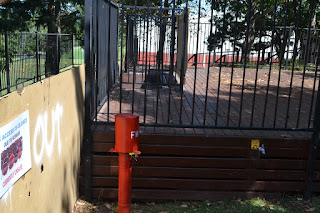Rule of Thirds:
F-stop: f/9
Shutter Speed: 1/400
ISO: 1600
Date: 1/4/16
Conditions: sunny and no clouds
Firehydrant based on the left side of the photo
F-Stop: f/13
Shutter speed: 1/800
ISO:1600.
Date: 1/4/16
Conditions: sunny and no clouds
Firehydrant based on the right side of the photo

F-Stop: f/10
Shutter Speed: 1/1000
ISO: 1600
Date:1/4/16
Conditions: Sunny and no clouds.
Firehydrants based in the middle of photo.
Rule of Thirds is used as an imaginary guideline of the subject.
Shutter speed: 1/800
ISO:1600.
Date: 1/4/16
Conditions: sunny and no clouds
Firehydrant based on the right side of the photo
F-Stop: f/10
Shutter Speed: 1/1000
ISO: 1600
Date:1/4/16
Conditions: Sunny and no clouds.
Firehydrants based in the middle of photo.
Rule of Thirds is used as an imaginary guideline of the subject.
Diagonal Rule:
F-Stop: 5.6
Exposure Time: 1/640
ISO: 1600
Weather: cloudy
F-Stop: 5.6
Exposure Time: 1/640
ISO: 1600
Weather: cloudy
F-Stop: 5.6
Exposure Time: 1/640
ISO: 1600
Weather: cloudyDiagonal Rule is used to make the view "drag" their view through a photo or subject.
Leading Lines:
F-Stop: f/5.6
Exposure Time: 1/640
ISO: 1600
Weather: cloudy
Date: 16/3/16
F-Stop: f/13
Exposure Time: 1/640
ISO: 1600
Weather: cloudy
Date: 16/3/16
F-Stop: f/5.6
Exposure Time: 1/640
ISO: 1600
Weather: clear, photo taken under cover.
Date: 16/3/16
Leading lines are used to draw a viewers attention to a specific part of the frame, whether it’s a person or a vanishing point in the background of the frame.
Viewpoint Variation:
Low viewpoint
F-stop: f/18
Shutter Speed: 1/8
ISO: 100
Conditions: cloudy, but clear
Medium viewpoint
Low viewpoint
F-stop: f/18
Shutter Speed: 1/2500
ISO: 100
Conditions: cloudy, but clear
High viewpoint
F-stop: f/18
shutter Speed: 1/1250
ISO: 100
Viewpoints are used in photography to add more detail to a photo. Example being that the high viewpoint tells you that person in the photo has climbed a tree.
Balance (60-30-10)
F-Stop: f/16
Shutter Speed: 1/800
ISO: 16 00
Conditions: Cloudy
Date 21/3/16
F-Stop: f/16
Shutter Speed: 1/800
ISO: 1600
Conditions: Cloudy
Date 21/3/16
F-Stop: f/16
Shutter Speed: 1/500
ISO: 1600
Conditions: Cloudy
Date 21/3/16
I was after contrasting the clouds, which made the building and trees in my subject dark. The aim of 60-30-10 is to divide the photo into 3 sections, one part of the image is made up of 60% of the sky, 30% building and 10% of the ground.
